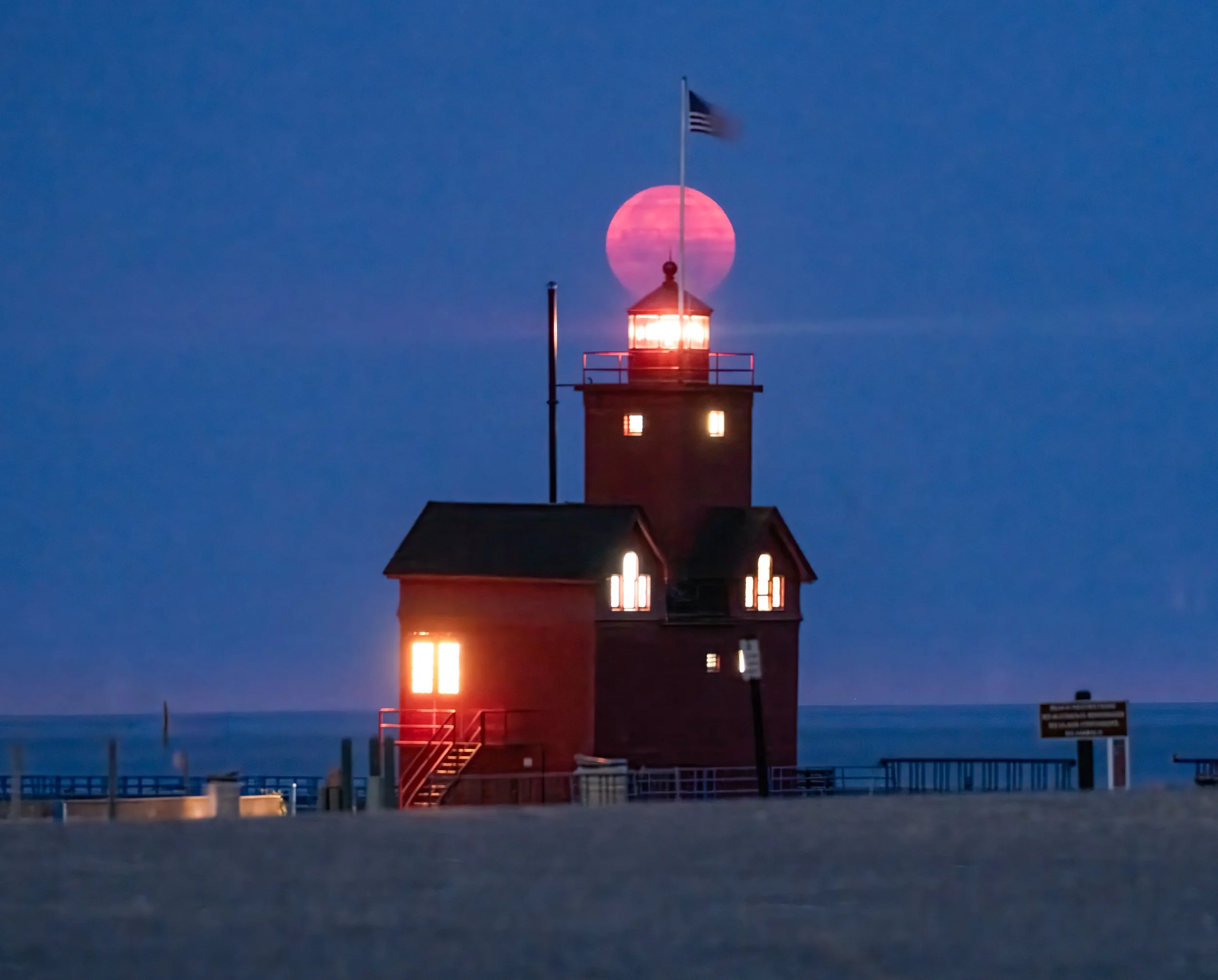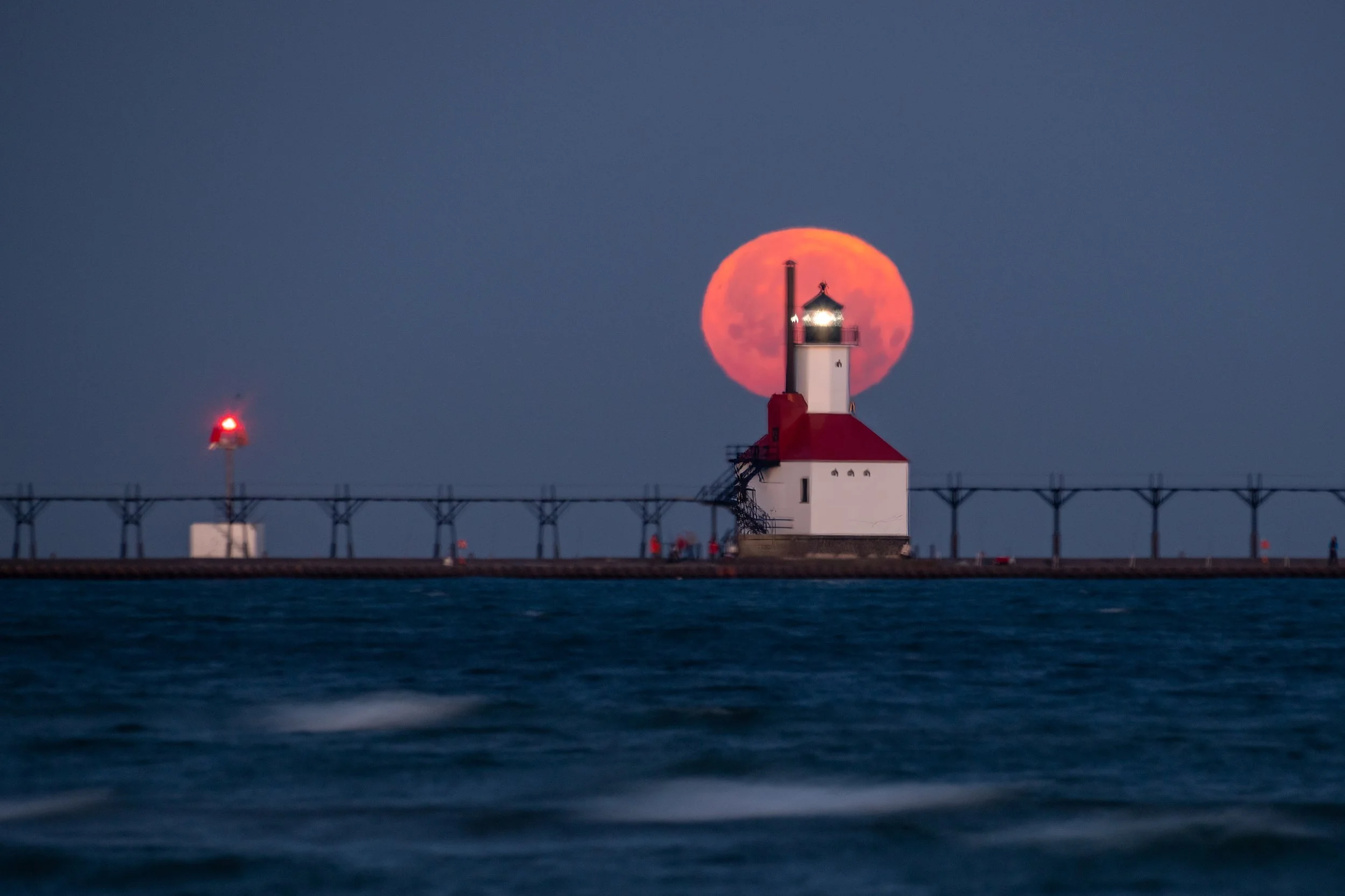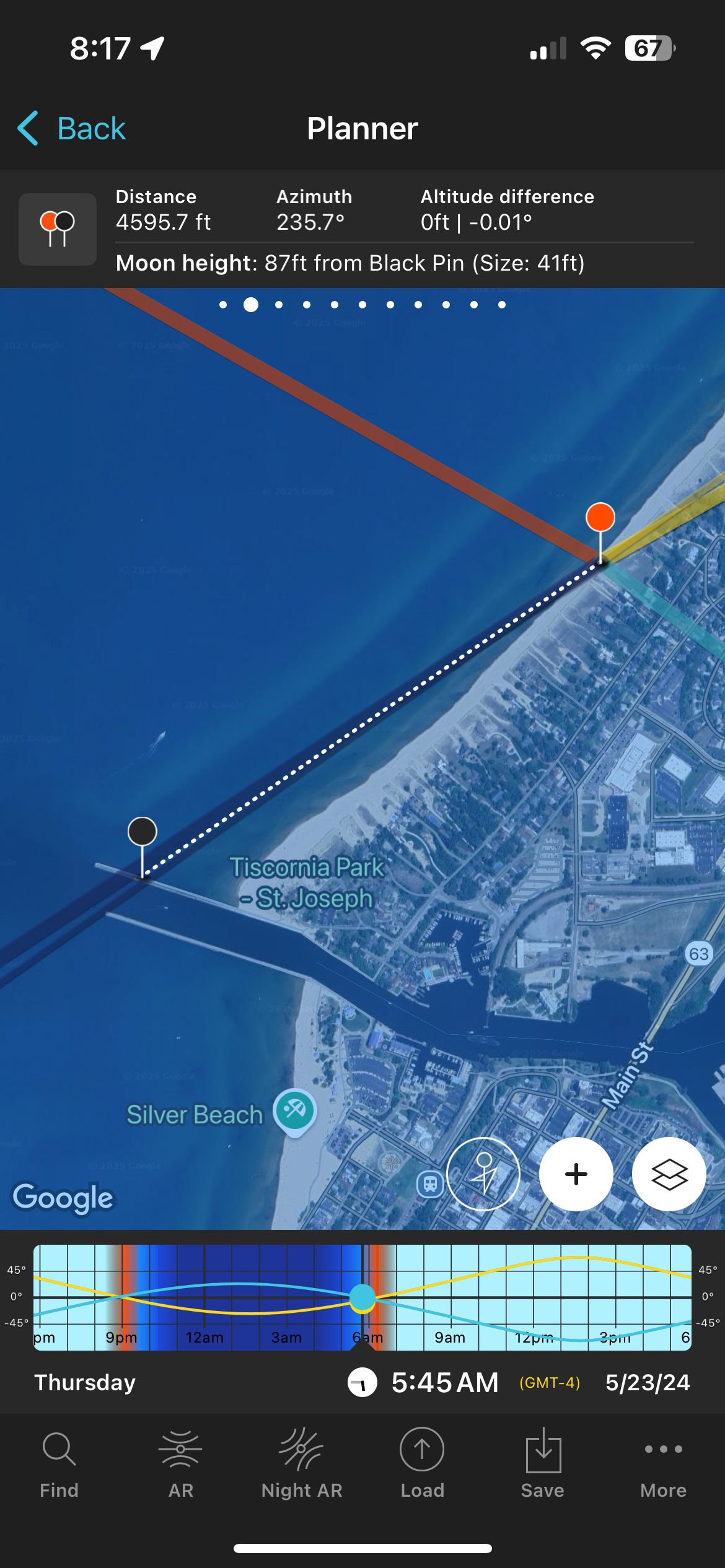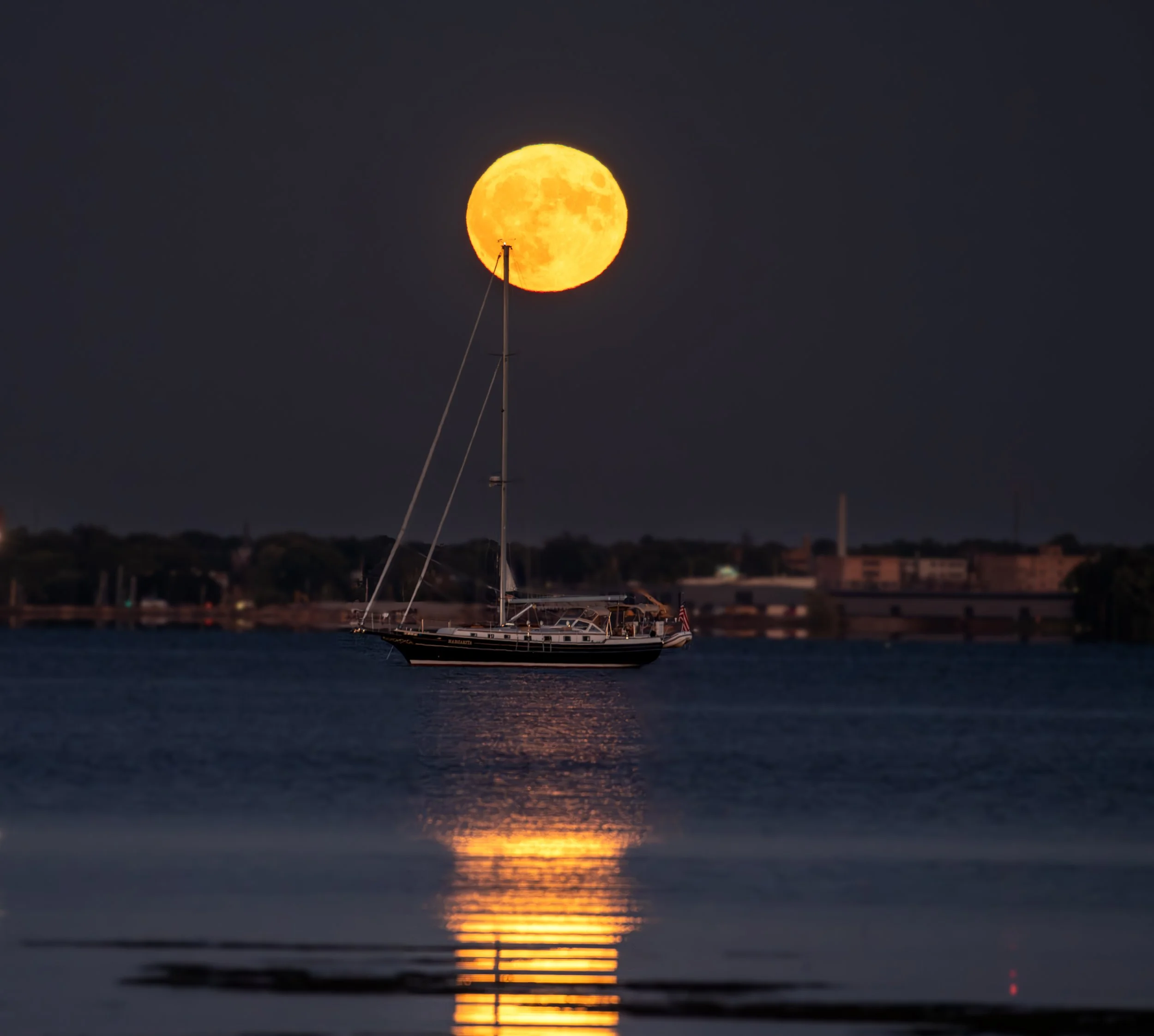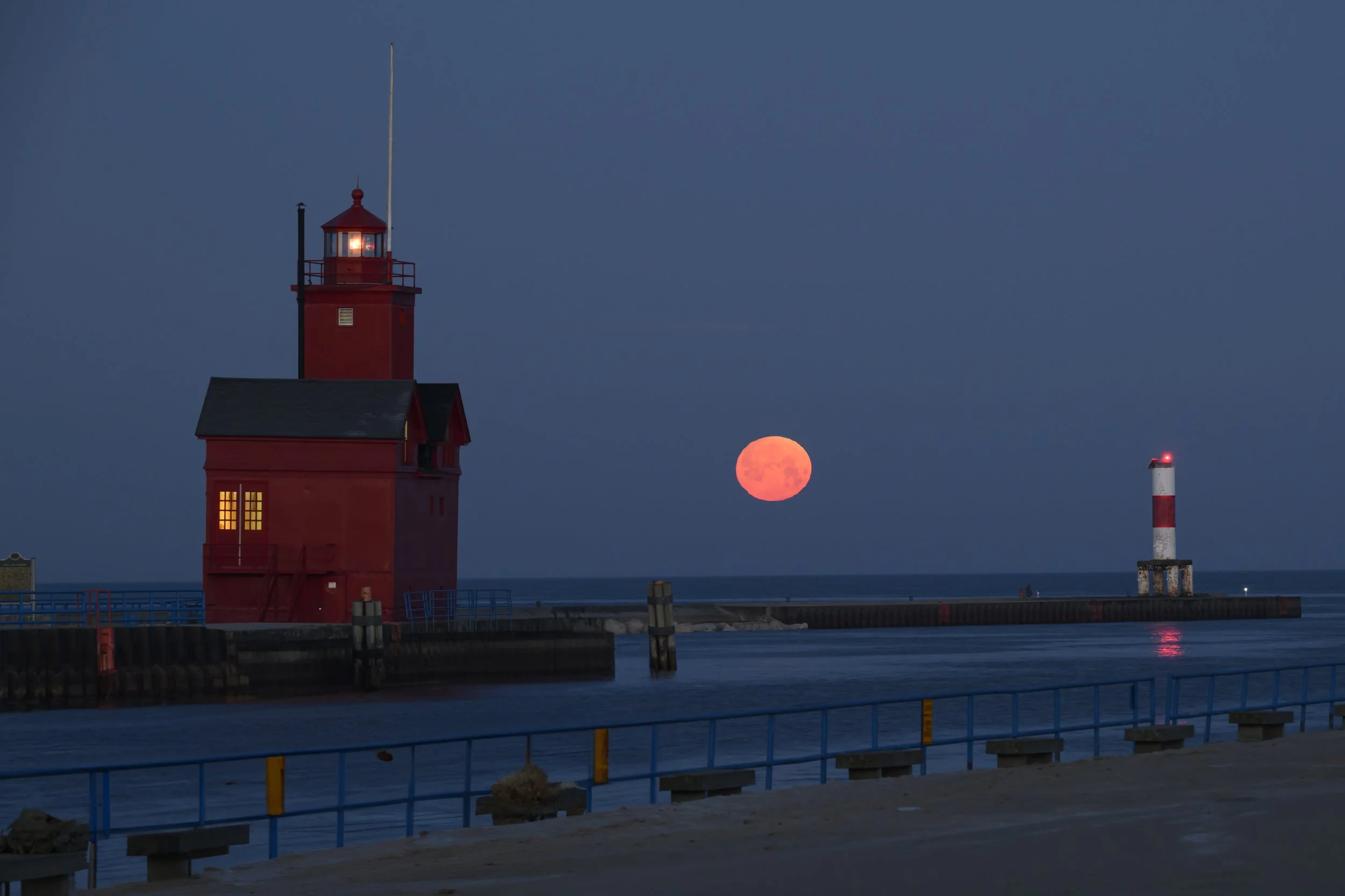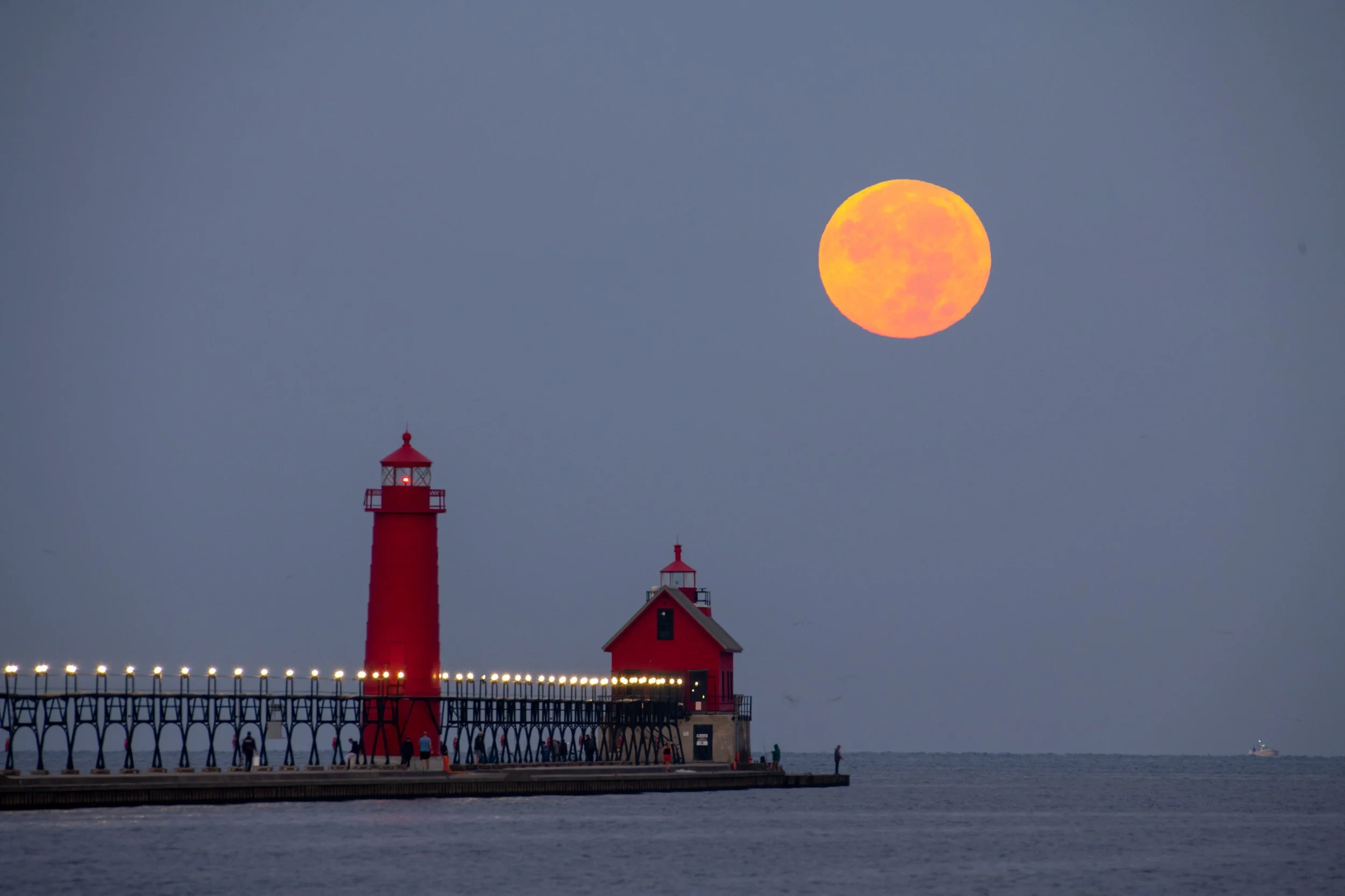July - Full Moon Photography
The moon, like the sun, rises in the east and sets in the west, following its own distinct cycle. It takes approximately 29.5 days to complete one full lunar cycle, from full moon to full moon. Because of this, it's possible for two full moons to occur within a single calendar month. The second full moon in such a month is known as a "blue moon."
In order to capture a full moon in a specific location, it takes planning for location, time and weather.
All of the images here are edited for contrast and exposure. The colours and position of the moon are not altered. Often the foreground is edited for exposure, independent of the sky and the moon, due to the brightness of the moon and the darkness of the foreground just as the sun is starting to rise or set.
It starts with a plan which will include time, place and weather. Actually the first step is cloud cover prediction. Windy, Astrospherics and Clear Outside are three apps that I use. And then hope, because even the night before, forecasts are never 100% reliable. The screen shot above is from Astrospherics, a free app. Blue is good (clear)
PhotoPills is a paid app ($10, well worth the investment) that shows exactly where the moon is (or was) anywhere and anytime. The red pin is the shooting location, the black pin is the subject and the blue line is the track line of the moon setting. The plan shown resulted in this picture.
A long lens and a long distance from the subject will make the moon appear larger. The challenge is to find a sight line that allows for significant distance and to ensure that both the moon and the subject are in focus.
The first picture, Grand Haven Lighthouse was shot at 400mm and about 700 yards. For reference the Lighthouse is 36 feet tall. The middle picture was taken across Lake Muskegon at 1.1 miles and 500mm. The Ludington Light station was again at 700 yards and 500mm. Unfortunately, there are not always sight lines for the precise locations needed.
Since the images are shot in raw file mode, they are edited in Lightroom and sometimes Photoshop. This is mostly for exposure. As I noted above, I will remove distractions, but never alter the moon’s position. These are always as shot.
The full moon sets close to sunrise and the light can vary a lot. Ideally, there is enough light to capture the foreground and not have to over expose the moon. It is pretty tricky to get it right. The moon is moving, so the shutter speed has to be fast enough to keep it sharp. Anything under 1 second is usually enough. Most of these images are shot at medium aperture, F8-F11 and 0.6 seconds, depending on how low the moon is and how bright it gets. All images are shot on a tripod using a delayed release to eliminate vibration.
When the moon’s orbit brings it closest to the earth when the moon is full, it appears slightly larger and is designated a Super Moon. There are 3 full super moons this year, Oct 7, Nov 5, and Dec 4. The moon also appears larger when it sets or rises, but that is due to the optical illusion of seeing the moon relative to earthly objects as opposed to high in the sky.
Full moons have been named by Native Americans and Colonist in relation to nature’s signs. January is the Wolf Moon, and then Snow, Worm, Pink, Flower, Strawberry, Buck, Sturgeon, Corn, Hunter, Beaver and Cold.
Go out to see your moon shadow and experience a moonset. It moves a lot faster than you might think when it gets close the horizon. And the colour changes are amazing. Questions, comments, drop me a note in the links below.


